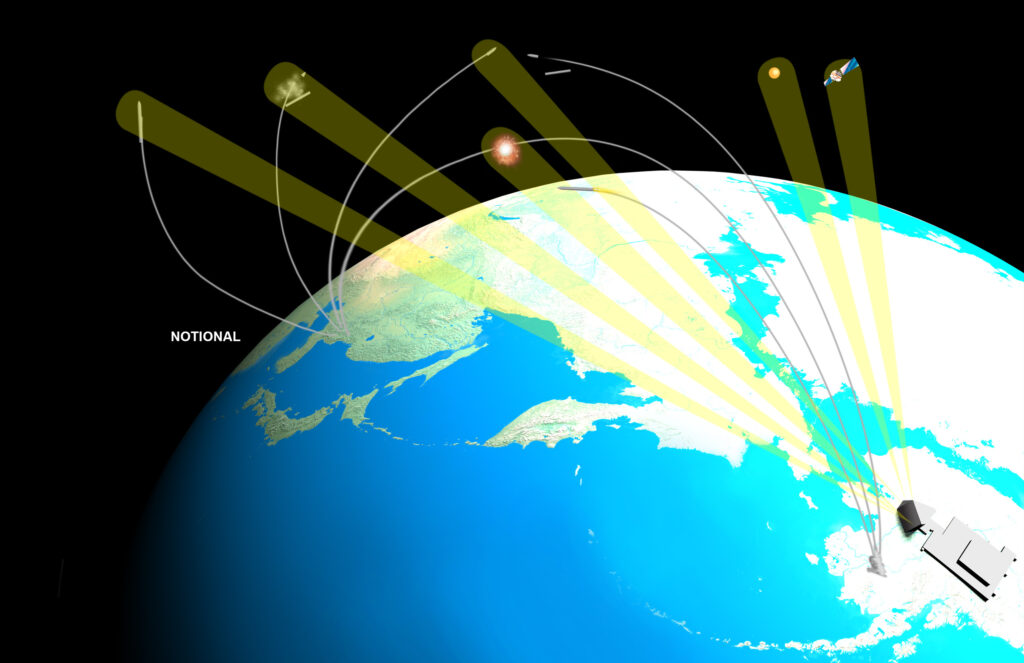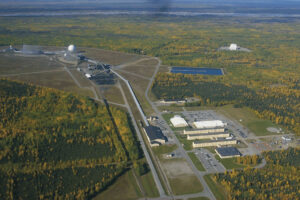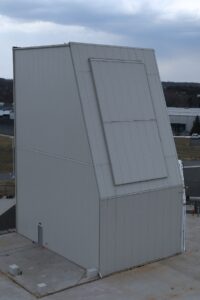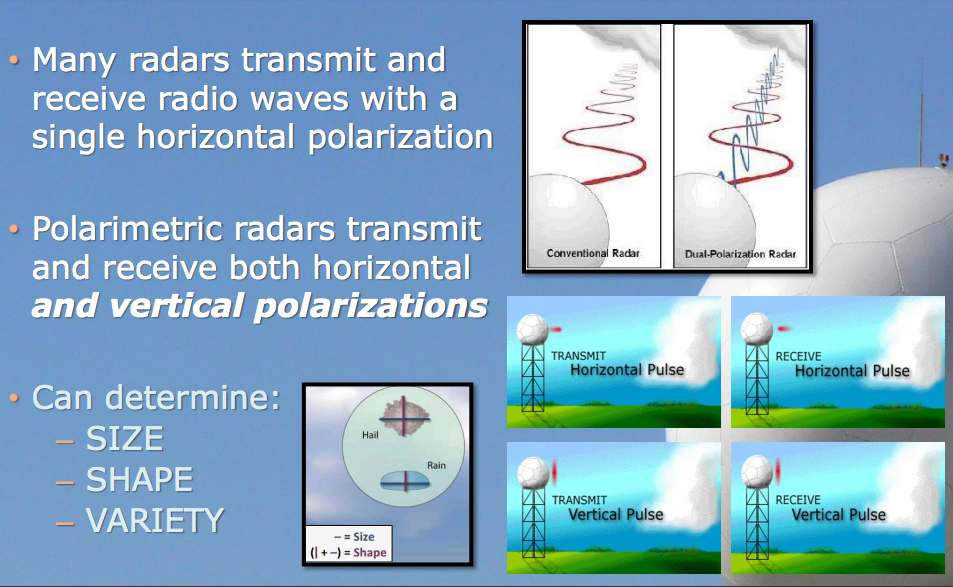New Missile Defense Radar Passes Key Stage: Lockheed LRDR
Posted on

The Long-Range Discrimination Radar will be better able to tell apart different types of targets, as illustrated here.
As anxiety rises over North Korean rocket tests, the Missile Defense Agency needs better radar to tell threats apart. Which of those distant blips is an InterContinental Ballistic Missile (ICBM) warhead capable of hitting the US? Which is a burnt-out rocket boaster coasting harmlessly through space? Which is a decoy warhead designed to make MDA waste some of its limited supply of interceptor missiles?

Clear Air Force Station in central Alaska.
Telling targets apart better is the mission of the $784 million Long-Range Discrimination Radar. Today, contractor Lockheed Martin announced LRDR had passed a major milestone, the Preliminary Design Review. (Critical Design Review is scheduled for September and Final Design Review for December). Lockheed already has a scaled-down LRDR in testing, while the full-size LRDR is on track to be installed at Clear Air Force Station in Alaska in 2020.
Clear is in central Alaska, about a five-hour drive from Anchorage. It’s a compromise location, said missile defense expert Tom Karako. The Clinton Administration proposed putting radars on Shemya Island at the far end of the Aleutians, as close as possible to North Korea, while the Bush Administration built the Sea-Based X-Band (SBX) radar on a floating oil platform, capable of coming even closer, but installing and supporting sophisticated equipment on tiny, isolated Shemya is a logistical nightmare, while SBX is only able to stay at sea about a third of the time. A land-based radar in mainland Alaska is much easier to keep running, but it doesn’t have as good a view. In particular, said Karako, it can’t cover Hawaii, so the MDA is looking at a second radar to cover the island state, perhaps a scaled-down Medium-Range Discrimination Radar or an Aegis Ashore battery.
For attacks against the rest of the US, however, the LRDR at Clear will make a major difference, Karako told me. Even without adding decoys to the mix, a ballistic missile launch puts “a flying junkpile” into space, from burnt-out rocket motors to loose bolts, all coasting along on the same ballistic trajectory, and only one of them is worth shooting at: the warhead. LRDR helps sort through that clutter.

Solid State Radar Integration Site, a Lockheed test facility being used for LRDR
The “discrimination” in the name doesn’t mean the radar’s racist. Instead, it refers to the “ability to do precise, long-distance detection and characterization of ballistic missiles,” Lockheed program director Chandra Marshall told reporters this morning. “This radar can do that better than any radar in the field.”
How? Marshall was naturally cagey with details, most of which are classified, but she did drop some hints.
First of all, like many new radars, LRDR uses gallium nitride (GaN), which conducts high-voltage electricity much more efficiently than traditional materials. GaN makes it possible to generate a much more powerful radar beam: One industry executive said you can get 50 percent more range, search five times as large a volume, or improve discrimination.
Second, LRDR is “a dual-polarized, dual-range capability radar.” Marshall wouldn’t go into details, but the term “dual-polarized” is used in open literature to describe cutting-edge civilian weather radars, which are better at telling the difference between, say, rain, snow, and hail, and can even measure the size of the hailstones as they come down. A traditional radar sends out pulses of energy that are only polarized in one direction, horizontally. Imagine ripples expanding outward through a pond, only the ripples extend straight up into the air, like a moving wall. When such a horizontally polarized radar beam bounces off something, you only get a one-dimensional image of the target. But a dual-polarized radar sends out alternating pulses polarized at right angles to each other — one horizontal, then one vertical, then another horizontal — so you get a two-dimensional picture. By looking at both the horizontal and the vertical dimensions, the dual-polarized radar can tell apart objects that would look the same to a horizontal-only radar. While LRDR is presumably a rather more sophisticated implementation of this technology than a weather radar, the net effect is similar: the ability to tell objects apart — in this case warheads, not hailstones — at roughly twice the range.

Dual-Polarization Radar explained (National Weather Service slide)
Third, LRDR has the software required to take full advantage of these new hardware features. 90 percent of that code, however, is already in use today with the Lockheed-built Aegis missile defense system on Navy warships and land bases, Marshall said, so there shouldn’t be the programming nightmares often associated with software-intensive federal programs. The software will also have what’s called an open architecture, Marshall said, which means it will consist of modules written to common standards, which in turn allows third parties to write new modules as long as they conform to the standard. This plug-and-play approach is intended to allow easy and rapid updates, particularly important in an area like radar where adversaries are constantly coming up with new countermeasures.
That said, Karako argues the real long-term solution for target discrimination is to complement ground-based radars like LRDR with electro-optical satellites, in order to get multiple looks at each target from multiple angles with multiple types of sensor. “Every single administration for the past five administrations has had a space sensor layer for national missile defense….on paper,” he lamented. “None of them has done it.”
While radar is the whole solution, it’s a big part of it, and all of Lockheed’s innovations have application beyond LRDR. Whether or not the Missile Defense Agency decides it needs a second such radar, e.g. for Hawaii, Lockheed can scale the LRDR design up or down to fit on different platforms — not just land bases but also ships — for a wide variety of missions, Marshall said. Indeed, though Lockheed didn’t say this out loud, the superior discrimination of a dual-polarized GaN radar could potentially help it pick the tiny returns of stealth aircraft out of background noise, when traditional radars can’t see them at all. With Russia and China both working on “low observable” aircraft, counter-stealth is a technology the US could use.
Subscribe to our newsletter
Promotions, new products and sales. Directly to your inbox.
